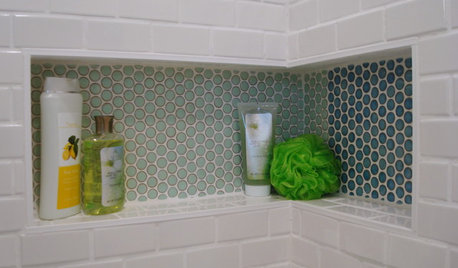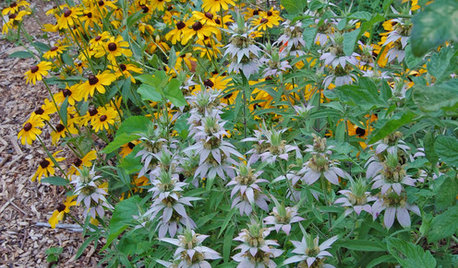The Low-Down on Black Spot
kinglemuelswife
15 years ago
Related Stories

KITCHEN CABINETSKeeping Cabinet Color on the Down Low
Give just base cabinets a colorful coat for a kitchen sporting character and a spacious look
Full Story
CEILINGSHow to Visually Lift a Low Ceiling Without Renovating
Low ceiling got you down? Stand up to it with these relatively easy-to-implement design moves
Full Story
HOUSEKEEPINGOut, Darn Spot! Tips for Removing Carpet Stains
Know the right solutions and when to use them to prevent stains from pets, soda, chocolate, blood and more
Full Story
MATERIALS6 Spot-on Places to Use Penny Tiles
You’ll flip for these coin-shaped wall and floor tiles in bright colors, subtle neutrals and even clear glass
Full Story
HOLIDAYS12 Home Hot Spots for Holiday Decorating
Deck these areas with garlands, lights and other seasonal decorations, and watch a festive mood take hold
Full Story
GARDENING GUIDESGreat Design Plant: Spotted Beebalm (Monarda punctata)
Looking for unusual, long-lasting blooms, low maintenance and deer resistance? Try this self-sowing perennial
Full Story
KITCHEN COUNTERTOPS7 Low-Maintenance Countertops for Your Dream Kitchen
Fingerprints, stains, resealing requirements ... who needs ’em? These countertop materials look great with little effort
Full Story
GARDENING GUIDES6 Native Ground Covers for Tough, Dry Spots
Sun beating down on your sandy gravel? Thick shade darkening your clay soil? There’s a ground cover here for you
Full Story
WINDOW TREATMENTSEasy Green: 9 Low-Cost Ways to Insulate Windows and Doors
Block drafts to boost both warmth and energy savings with these inexpensive but effective insulating strategies
Full Story
GARDENING GUIDESGreat Design Plant: Rosa Banksiae a Low-Maintenance Beauty
This thornless, disease- and insect-resistant rose brings showers of white or yellow flowers to the spring garden
Full StoryMore Discussions











User
henry_kuska
Related Professionals
Reading Landscape Architects & Landscape Designers · Sand Springs Landscape Architects & Landscape Designers · Peabody Landscape Contractors · Apollo Beach Landscape Contractors · Bridgeport Landscape Contractors · Burien Landscape Contractors · Cerritos Landscape Contractors · Elmhurst Landscape Contractors · Holtsville Landscape Contractors · Mission Viejo Landscape Contractors · Munster Landscape Contractors · River Ridge Landscape Contractors · New Carrollton Landscape Contractors · Greenfield Landscape Contractors · Bolingbrook Siding & Exteriorsolga_6b
bellegallica
henry_kuska
jerijen
kinglemuelswifeOriginal Author
henry_kuska
greybird
olga_6b
gnabonnand
michaelg
henry_kuska
patriciae_gw
anntn6b
nickelsmumz8
kinglemuelswifeOriginal Author
anntn6b
bellegallica
greybird
kinglemuelswifeOriginal Author
henry_kuska
barbarag_happy
buford
buffington22
User
patricianat
michaelg
anntn6b
michaelg
henry_kuska
michaelg
loratw619
henry_kuska
henry_kuska
michaelg